Headlight Globes + Club Permit Schemes + Fuel Consumption - Morley 403



|
Morley's wrestling with headlight globe failure, expounding the merits of club permit schemes, analysing fuel consumption characteristics at idle, and there's yet another Commer Knocker yarn
MORLEY'S SOAPBOX
I don’t know about you, but there’s no way in the wide world I’d replace one side of a set of brake pads. Neither would I (or, presumably, you) replace one windscreen wiper. Or half the spark plugs. But there is one pair of components in most cars that we’re entirely happy about replacing one at a time. Globes.
Headlight globes, tail-light globes, doesn’t matter. One blows, we’re usually quite okay with changing it for a new one. But something happened to me the other day that made me question this.
Now, I’ll preface this by saying that I haven’t had too many headlight globe failures over the years. Which is why what happened is all the more bizarre. One of my cars (a Toyota LandCruiser) blew both its H4 low-beam bulbs (and only the low-beam part) within about 12 hours of each other. Now, you might think that’s one hell of a coincidence. But I’m not so sure it was (a coincidence). See, this is the second time this has happened to me in the last 15 years or so. Back then, an AU Falcon XR6 Ute I had blew one low-beam globe on the way to the airport, and the other one on the way home next day. Spooky? Maybe, maybe not.
I asked Torrens if he’d had the same experience, and he has! And he puts it all down to the fact that globes when globes are fitted as a pair, they’ve usually come from the same factory, down the same assembly line, on the same day, with the same assembly workers using the same raw materials. Then you or I buy the globes, usually as a pair, in the same packet. Fitted to a car, both globes then see exactly the same amount of time in use and are subjected to the same extremes of temperature and vibration. Which is why, Torrens and I concluded, that they often seem to blow as a pair within a few hours of each other.
I guess the point here is that if one’s blown, the other isn’t going to be far from doing the same. At which point, you’re better off buying them as a pair and replacing them in pairs, rather than replacing one and waiting for its mate to go pop just as you’re packing the tools away. I’d bung the unblown one in the glovebox wrapped in a rag as an emergency spare, but I reckon from now on, I’ll be doing globes like I do wiper blades… in pairs.
As an aside, testing the low-beam circuits on the old Cruiser (to make sure it was both bulbs that had blown, not a fried wire or something silly) I couldn’t figure out why the test-lead didn’t want to light up when I thought it should have. Turns out, Toyota switches its headlight circuits on an 80-Series (and many other models I’m told) through the negative side of things, not the positive as I’d assumed. I don’t imagine it makes any difference to how the lights work, but can anybody out there enlighten me as to why Toyota might have done this? I’m sure there’s a perfectly logical explanation, but I’m damned if I can think of it just at
the moment.
HERE'S MY TIP
Sussing the seller

One of the reasons I prefer to buy second-hand cars privately is that I get to meet the owner. Trust me, you’ll learn almost as much of value from the seller as from inspecting the car. Recently, a car that looked good in the online photos was a piece of crap in reality. The owner clearly had no idea which way was up. He started out by telling me that the bubbling under the new paint was where the rust used to be. He also had no idea why a four-seat car would be registered as a two seater or why there were the remnants of a home-made strut brace between the towers. Clearly the bloke had been sold a pup and was trying to unload it. Not to me, he wasn’t. I actually felt sorry for him, but not sorry enough to buy this turd. He still owns it.
LETTERS
What's that, Skip? Techno-fear?
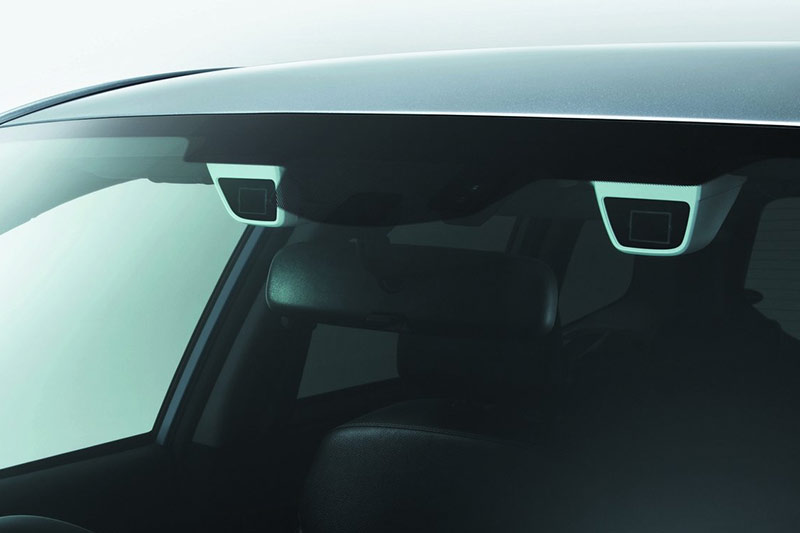
In your last column you made the point that cars are becoming too clever for their own good. I have to agree. A few years ago my brother purchased a nice second-hand Land Rover Discovery 3 V8. One night, halfway through a sweeping country bend that may, or may not, have been approached at a little over the speed limit, a kangaroo made its bid for immortality. Bouncing into the front bumper, the ‘roo was safely despatched underneath the vehicle, barely altering the Landie’s line.
But here’s where the built-in technology took over, with potentially fatal consequences. Sensing a collision, both front airbags detonated, filling the cabin with smoke and dust. The collision management system now helpfully turned on the inside light and activated the hazard flashers which, combined with the smoke, rendered anything outside the windscreen invisible. As a final insult the system automatically shuts off the engine, severely compromising the efficiency of the power steering and brakes. At night. On a bend. Luckily for my brother and his passenger, he managed to pull up safely, due in part to a calm head and extensive experience as a rally driver. Others may not have been so fortunate.
Julian Hembrough,
Mount Richon, WA
I feel your (if not Skippy’s) pain, Julian. And it’s stuff like this technology, when it’s applied in an inappropriate way, that is one of my biggest bitches with modern cars. I don’t know too many Aussie drivers with any real experience who haven’t had a close encounter of the marsupial kind, and as well as almost causing a crash, having both air-bags go off could possibly make the car undriveable, leaving you stranded in the middle of who-knows-where. Meantime, I managed to snot a roo last Christmas up in the Snowys in the 80-Series I was just talking about (re blown headlights) and the damage was precisely zero. Didn’t even bend the number plate. Skip did a pretty neat tumble-turn in the mirrors and disappeared with no obvious damage, either.
Don’t get me wrong, I know for a fact that air-bags save lives, but in a vehicle like an off-roader, they need to be calibrated so that clobbering half the coat of arms or nudging up to a dead tree (to fell it when the chainsaw won’t start) won’t set them off. Aside from the safety factor, having to replace two air-bags (not that it has them) would write my Cruiser off as far as any insurance company would be concerned.
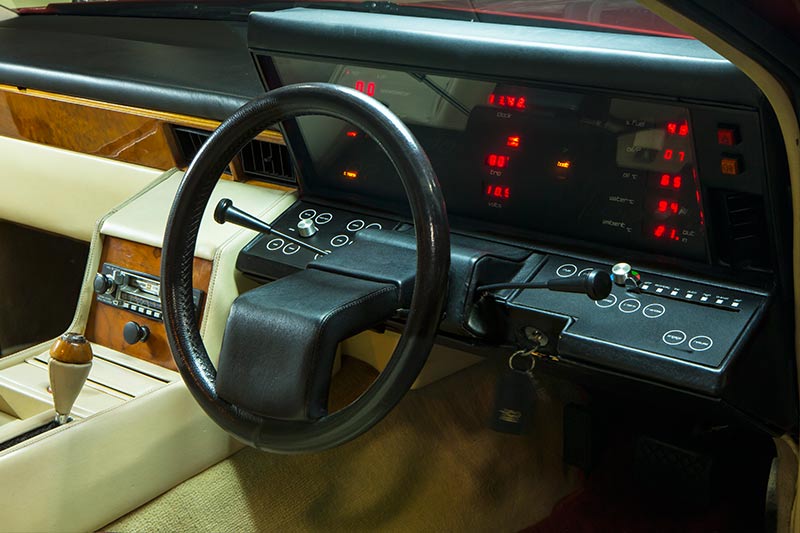 While technology may well be your friend, Lagonda managed to make it look ugly
While technology may well be your friend, Lagonda managed to make it look ugly
Meantime, I have absolutely no idea what place things like electronically-adjustable air-suspension and multiplexed electronics have on an off-roader destined for places like the Simpson Desert. Same goes for the current crop of direct-injection turbo-diesels. I’m inclined to think the only electronics in any off-roader – that will be dunked in rivers and filled with powdery dust – should be in the stereo head-unit. Mind you, I’d have one of those chilled six-can centre-consoles in my Tojo any time.
But technology doesn’t have to be ruled out entirely. If engineers are familiar with the circumstances likely to be encountered, they can often tailor technology to work properly in a specific environment. The best example I can think of happened when anti-lock brakes were a brand new thing. Typically, it was upmarket European cars that first sported ABS, and, equally typically, it was all calibrated for lovely smooth, European hotmix. Out in Australia, on gravel (where ABS is possibly more valuable than on bitumen) that Euro calibration was a disaster. Rather than letting the front tyre lock enough to build up a bit of a wedge of loose gravel to help stop the wheel, the ABS sensed the smallest lock-up as a potential disaster and unlocked the wheels, leading to dramatically higher stopping distances.
The solution was to get the Bosch engineers to talk to their Aussie counterparts and do some real world testing. The end result was a specific calibration for Australia and, suddenly, ABS was helping prevent crashes, not adding to them.
That approach is still paying off, and even though we’re about to kiss local car-making goodbye, it’s nice to see that companies like Hyundai and Kia still employ the services of Aussie engineers when it comes to finalising the suspension settings on the cars they sell here. Same goes for a lot of other car-makers who use Australia as a hot-weather (in the European winter) test zone.
Wrong, times ten

Whilst I hesitate to pull Dave Morley up on a technical issue, his claim of the fuel consumption at idle (of 0.3 litre per hour to be saved by stop-start) is out by a factor of 10.
Assuming a naturally aspirated 1500cc engine, idle speed 750rpm, air density of 1.225 kg/m3, air to fuel ratio at idle of 16:1 (by mass) and a fuel density of 0.75 kg/l we get an idle fuel consumption rate of 3.44 litres per hour. Allowing for throttling loss and a bit of EGR let’s say three litres per hour. This figure aligns with the fuel consumption reported by the on-board system on several cars I have checked it on.
Now, that still only means about 50cc (or about six cents) per minute, so stop-start does not save a lot at any one time but it all adds up, CO2 being the main driver. In most systems easing off the brake pedal will restart the engine while still keeping the car stationary. Using the hand-brake likewise. Not braking quite so hard as the car stops will prevent stop-start kicking in. Just another skill to be mastered! The system can usually be turned off, but nearly always this is a once per trip process unless you can find a hoodie with a laptop to tinker with the code.
The next iteration of plug in hybrids will use electric drive to launch the car giving the internal combustion engine time to get up to pressure, which will get around the niggly DCT take off issues too. Love electric drive off the line.
But I fully endorse the recommendation regarding the BMW 850i with EML issues. That V12 is very much worth keeping as intended and despite the general fear of expensive and complicated electronics, the issues are nearly always cheap(ish) and either sensor or mechanically related. The black box rarely fails, even though so called technicians love to swap them out at huge cost to the customer, often several times before deciding to call in an old fart who understands that suck, squeeze, bang, blow is how engines work.
Lawrence Glynn,
Grovedale, VIC
Lawrence, mate, don’t ever be afraid of calling me out on a technical issue. As I’ve said many times before, as a mechanic, I make a great journalist. Meantime, I’m going to have to take your word on the mathematics of this, because (as I’ve also said many times before) as a mathematician, I make a great mechanic.
But you know what, I know you’re dead right about this stuff. How do I know? Because the on-board computer on my LS1-powered daily driver gives the precise number of litres per hour at idle you nominated: three litres per hour. Now, that’s no 1500cc engine, I know, but that’s what the on-board brain is telling me as I sit there in gridlock hoping for a meteor to crash into the road to ease the boredom. The big question, then, is how I came up with the figure of 0.3 litres per hour. Actually, that’s the number that The Speaker’s car spits out in the same circumstances. It’s a 1.4-litre four-cylinder with a turbo and a supercharger, but the supercharger clutches when it isn’t needed, so I guess that’s one of the ways it gets down to such a low figure. Unless the computer is telling me porkies. (Which could be right, because I just checked it again and it was showing 0.7 litres per hour. Today. That said, it’s just had a top-end freshen up, so it could still be a bit tight yet.)
The idea of a petrol-electric hybrid using the electric motor to get the ball rolling is a nice bit of thinking, isn’t it. You know, maximum torque at zero revs for snappy getaways. But I’m not sure it’s completely a thing of the future: Stuff like the Toyota Prius already kicks off on electric-only power provided there’s enough juice in the battery and you don’t take the throttle pedal too close to the floor. Either way, I’d still always be happier without my petrol engine going from no load to max load before it’d had a chance to build up some oil pressure.
No permits out west
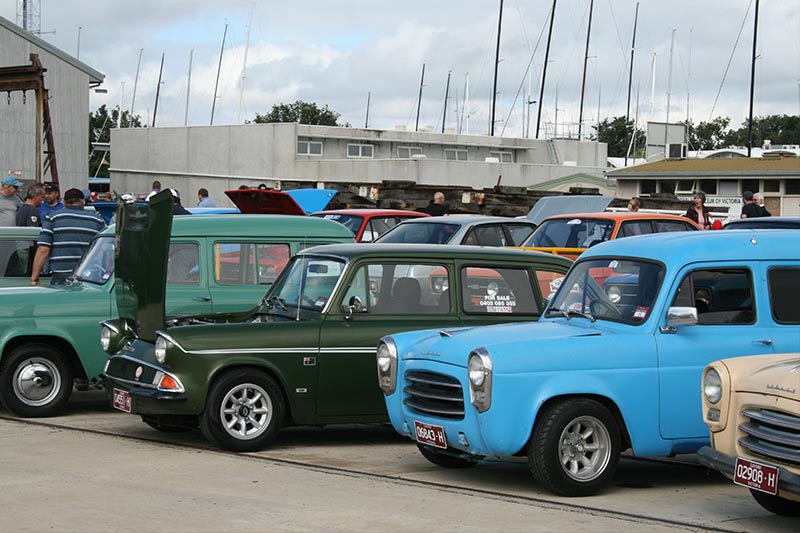
I am writing in response to a mention some issues ago about cheaper rego for older vehicles. I believe you called it 60-day rego and I was wondering if this is something that will ever be available in Western Australia, where I live. Registration fees in WA have doubled in the last few years thanks to the previous government which has made me let the rego lapse on some of my old cars due to the cost. I was hoping that something similar would be available over here and I’m wondering who I should lobby regarding that possibility in the future.
I find it quite frustrating that most people view old cars as slow, unsafe and polluting, yet an old house with its lead paint and asbestos walls receives heritage listing. Most of us as are not rich by any stretch of the imagination but through a lot of hard work and dedication, manage to have an old toy or two that brings back great memories of a simpler time when a car meant everything.
Anyway that’s enough of my griping, I thought I would share with you, Morley, my ownership of an Atlas grey VN SS that I bought for $3K some years ago in Sydney and drove back to Perth after a Bathurst pilgrimage. It never missed a beat and averaged 27 mpg on the trip. I can remember seeing them brand new at the Brisbane Motor Show in 1989 and thinking how cool they looked and saying to myself, I have gotta get one of these.
Well it didn’t exactly go quite to plan. What with marriage and life getting in the way it just didn’t happen, well not for 25 years anyway. But it was always on the radar. I actually have a couple of VNs and a lot of my mates ask why. They weren’t exactly the prettiest Holden and, let’s be honest, the plastics are dreadful. But sometimes it’s those failings that make them appeal. That, and the fact they were cheap.
But, like you, I think that will change and as most go the great wrecking yard in the sky those that are left behind will become more desirable as time goes by. My VN has what they call the power pack and has full electrics including power-windows that work (c’mon Dave, they aren’t that bad, it’s mainly just switches). Thankfully it missed out on the ‘hole in the head’ sunroof. That aside it’s an honest car and I would love to be able to drive it regularly. Which brings me back to 60-day rego.
It’s amazing to me now, as cars go over the 10-year/200,000km barrier how little (or no) respect we give them. I bought, only three weeks ago, for $750, a VT commodore S. I fitted two new tyres and a sway-bar bush and I believe it would go straight over the pits here as it’s a real clean car. It still has all its books and even a receipt of purchase. Not bad, I say, even better as it’s a factory supercharged model and goes well. It might even be a candidate for a competition for cheapest performance car on a budget.
Jason Kelly,
Perth, WA
Jason, as I’ve said many time before today, the club permit (or 60-day permit, call it what you will) rego scheme is the best thing ever to happen to tappet-heads like us. It varies from State to State, and the NSW version gives you 60-days a year to drive a car more than 30 years old. In Victoria (where I live) the scheme allows for either 45 or 90 days (your choice) for cars more than 25 years old and is more or less a carbon-copy of the scheme first introduced into South Australia.
What it mean is that I can have an old car on the scheme and use it for those 45 or 90 days every year provided I fill out a logbook before each day’s use. I can’t use it for commercial purposes (like, for wedding hire, for instance) but beyond that, I can drive it interstate, day or night, however I like. It’s brilliant.
But it’s also good for everybody else. For the government, it’s a win because it means the gummint is getting something for my cars every year. If I had to pay full rego, there’s no way I could have my weekend cars registered and the government would get nothing. The spare parts and repair industry gets a gain, too, because I’m buying oil, tyres, batteries, you name it, for my old dungers that I wouldn’t be if they were just laid up in the shed. Even the insurance industry gets a free kick, because even though they’re on a permit, my old crocks still have to be insured before I’ll take them on the road.
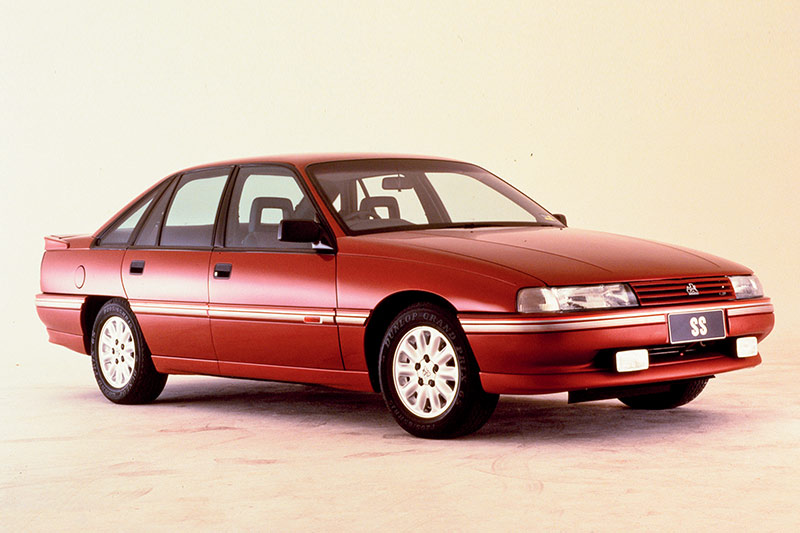 Based on Jason's trans-continental experience you could sell a VN SS on fuel economy alone
Based on Jason's trans-continental experience you could sell a VN SS on fuel economy alone
In fact, insurers like Shannons have been smart enough to offer a really good insurance deal for cars on club-rego permits, knowing full well that these cars are pampered, locked away at night and won’t be on the road for more than 90 days a year. It beats me why the various State motoring clubs haven’t made a bid for this market, also.
The car clubs have had a spike in membership (in Victoria, you also need to be a paid-up member of an affiliated car club to qualify for club rego) and that’s meant a big surge in their social activities and more weekend club runs and car shows. And as those activities ramp up, so does interest in old cars and the whole thing spirals up another notch. To the point where my interstate mates love visiting me on a sunny weekend.
There’s a pub near my place with a beer garden that faces the highway and, on a sunny Sunday arvo, you can sit and sip a schooner while one of every kind of classic car (on club plates) scoots by on its way to a car
show or picnic or whatnot.
The danger, of course, is that the dickheads out there abuse the system. In Victoria, if you get sprung driving with your logbook not filled out, the fine is for driving an unregistered car (which is exactly what you’re doing). Also, I often see heavily modified cars on club plates which worries me. There’s a modified-car permit system for that in Vic, and cars on club plates are supposed to be mechanically standard. Even the dimmest copper can tell you that an EK Holden with wheel-tubs and a 6-71 poking through the bonnet shouldn’t really be on a club plates.
The other thing that annoys me a bit is car snobbery. Some (but not all) blokes with old Ferraris and Rolls Royces and such tend to think the club-permit scheme was invented purely for them and they turn their noses up at a 1980s Corolla Twin Cam or a VN SS on club plates on the basis that they’re ‘not real classics’. To which I say: Pull yer head in. My VN SS is as much a part of Aussie motoring history as your Spaghetti Sportster or Rolls Cunnardly is an integral player in the history of oil leaks.
So, yeah, Jason, I’m with you all the way on VN SSs. You’re right about people abandoning cars just because they’ve covered a few kliks, too. You see ads in the paper all the time for cars with 99,000km showing. Clearly people just get hung up on the idea of a car being rooted once the odometer has clicked over for the first time. But hey, that’s great news for us bargain hunters, right?
Gunn advice
I was recently going to Adelaide to catch up with a mate of mine. An article in my car club’s mag (Bolwell Club) mentioned the Greenock Aviation Museum near Nuriootpa in the Barossa Valley. The owner of the museum not only has a keen interest in aircraft but has four or five Commer Knockers on site. If you happen to show a keen interest in the aircraft and trucks, as my mate and I did, the owner may kick one of the Knockers in the guts for you (as he did for us). The sound of it firing up and him giving it a few revs in a tin shed is amazing.
He also has an aircraft radial engine and Rolls Royce Merlin set up on operational stands which he will fire up if enough people are there. The $5 entry it is an absolute bargain.
Shane Gunn
Heathcote Junction, Victoria
Righto Shane, you’ve just put Nuriootpa on my radar as a place to stop next time I’m driving to Adelaide (which could happen any time, `cos South Australia seems over-represented in the four-wheeled-treasures department). And here’s the deal, anybody else reading this should drop in, too, and tell the owner Unique Cars sent you. Who knows, we might all get special treatment (not that I’d haggle over five bucks, but it’d be nice to hear the Knocker fire up).
And who knows, based on the success of the recent – and inaugural – Unique Cars readers’ day out to the car museum at Shepparton, maybe we’ll be seeing UC readers’ runs in other States. If that happens, I reckon we could pencil in the place you’re talking about as a great destination.
’Tis a small world
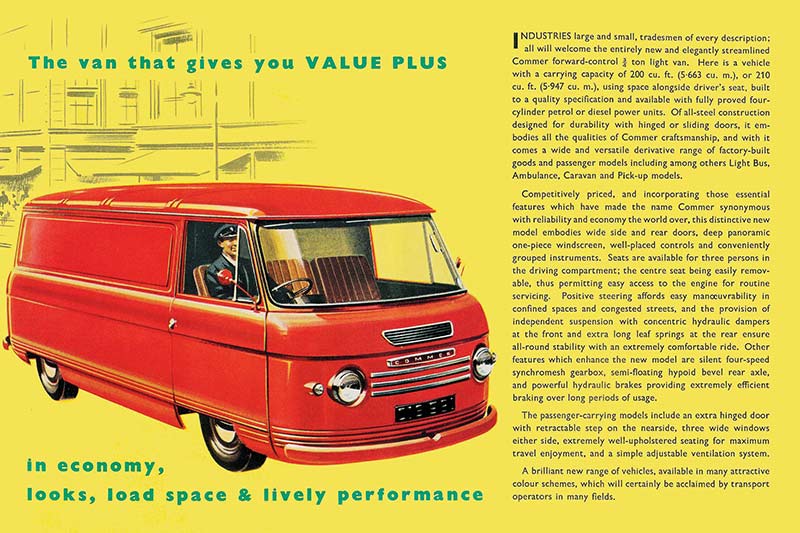
Recent talk about Commer Knockers reminded me of a different kind of story. Let’s call it a ute story. Knocker Knowles, from Adaminaby in the Snowy Mountains, was a good diesel man, and it’s not hard to see where he got his name. He dredged rock from the Murrumbidgee River at Bolaro and crushed it for road metal, and my brother and I were carting it up to Tumut Pond Dam. Considering the roads were steep – let’s say very steep,
and a long way down – and the brakes on those old trucks in the early 70s were good for one hard stop only, that was interesting driving.
Knocker’s job was a bit slow some of the time, and one day he had been refreshing with an occasional ale. He reckoned we would have a shorter trip if we drove out through the river loaded but we thought it was too deep. He said he would show us – he could drive his Falcon ute through, easy. He backed it well up the track, maybe 50 metres, and set off toward the river at a decent clip. Missed the entry where the track led in and went over the bank instead. He landed in a bit of a hole, and the splash was mightily impressive. Knocker just sat there, with the water lapping around his shoulders.
We decided then he was a better diesel mechanic than hydrologist. We debated whether to pull him out or leave him there for a few hours till we got back. In the end we pulled him out. There was no more discussion about driving through the river in the trucks.
Owen Rye
Boolarra South, Victoria
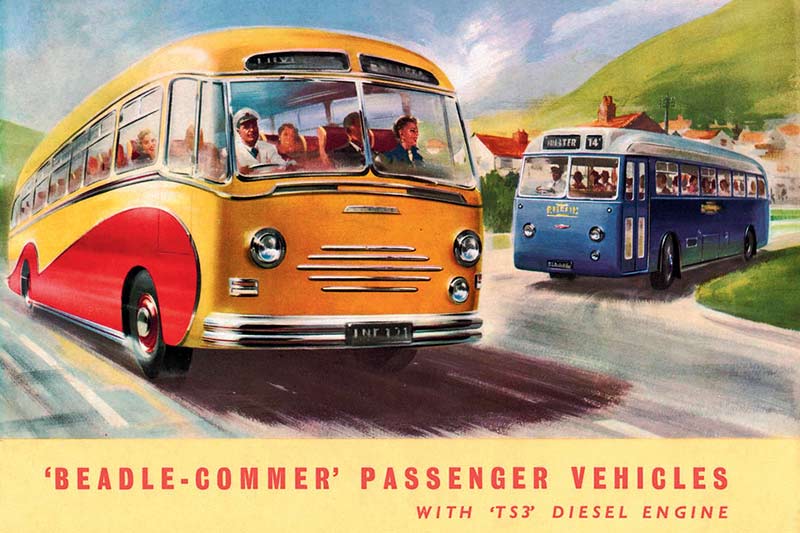
Owen, you're scaring me, mate. I know this is a small world, but this is freaky. I actually spent a few years growing up in Adaminaby from about age nine, right at the end of the major construction stage of the Snowy Mountains Scheme. And my best mate at school, Terry Osmond, who I’m still in contact with (and will be reading this) lived right next door to the Knowles family, the patriarch of which was none other than Knocker Knowles Esq. Terry and I went to school with Knocker’s kids. I was aware of Knocker, but never really knew him. His kids? Different story and they were, like us, all a bit feral, growing up in the bush and turning anything with an engine into a go-kart or shooting buggy. From what I can gather, Knocker had a reputation for being a bit of a, um, free thinker, and your story backs that up in spades.
My dad was the local copper in Adaminaby at the time, so I got to know a lot of the more colourful local identities one way or another. I had an absolute ball growing up there, attending crashes with the tow-truck driver (Nick Kennedy, whose kids I also went to school with) riding around in bulldozers with the Beagle Boys and learning a bit about trucks from the local transport operator, Barry Lucas. Tragically, Barry was killed while we lived in Adaminaby when his semi, loaded with logs, went over the edge of the road somewhere in the middle of nowhere. Barry’s kids stayed with us at our place (the local cop-shop and sergeant’s residence was a community centre as much as anything else back then) for a night or two while their mum got things sorted out. Adaminaby people were bred pretty tough. I guess you’d know all those names, Owen.
I have to say, growing up in Adaminaby in the 1970s was an absolute ball. My mate John Kerrigan’s dad (Paddy) ran the marina at Old Adaminaby, so we had access to tinnies (boats, not brews) while there was also at our disposal a cop four-wheel-drive, cop boat and even a cop snowmobile. When I visit Dad these days, we still talk about those days and agree that they were the absolute best of times. I’m off to ring Dad right now to see if he remembers you.
TRIVIAL PURSUIT
Stellar revhead

Everybody knows that Steve McQueen, as well as making the movie Le Mans, was a pretty dab hand behind the wheel himself. But my other favourite Hollywood hard-man of the day, James Garner, was also a wheelman of sorts. When he wasn’t crashing his metallic brown Pontiac Firebird outrunning the baddies in the 70s TV show Rockford Files, he was heavily involved in motorsport. Garner drove an Oldsmobile in the 1970 Mexico 1000 (the event that became the Baja 1000) and was owner of the American International Racers team. AIR ran cars in events such as Le Mans, Daytona and Sebring. Garner also drove the Indy 500 pace car in 1975, 77 and 85.
Jimmy checked out in 2014.
Close, but no cigar

You Couldn’t Make This Up Dept: The first traffic islands in the world were built in Liverpool in 1862, but the most ill-fated was the first built in London in St James Street in 1864. It was privately commissioned by Colonel Pierpoint, who was concerned that was going to be run down by a horse and carriage on his way to (but more likely home from) his private club in Pall Mall. After much work and money, his traffic island was finished and the good colonel rushed across the street to inspect it. And was mown down and killed by a horse and carriage.
True story.
Write to Morley c/o uniquecars@primecreative.com.au or Unique Cars magazine, 379 Docklands Drive, Docklands, Victoria 3008
Unique Cars magazine Value Guides
Sell your car for free right here
Get your monthly fix of news, reviews and stories on the greatest cars and minds in the automotive world.
Subscribe

.jpg)








.jpg)




